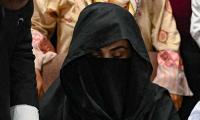The first part of this series ‘Performance issues’ (Oct 9) talked about the performance issues of the power sector. This part will deal with the existing regulatory and reform issues.
The recently published SOI report highlights the need to introduce tariff reforms, pointing out the front loading and take or pay issues. In the existing generation tariff system, tariffs are calculated on the cash flow model rather than the cost-based one. Debt servicing is front loaded and paid as per servicing requirements. This increases the tariff in the debt servicing period.
If it is cost based (interest plus depreciation), the tariff in the earlier project years is reduced. In heavy capex projects like hydro projects, the problem becomes more severe than in low capex projects such as solar or wind projects. This system has been possibly introduced under lenders’ pressure. Many countries including India do not have this kind of system. It is pleasing that the National Electric Power and Regulatory Authority (Nepra) has realised this problem, as indicated by the report.
There are other issues such as indexation of various kinds which have been debated at various forums as well. It is hoped that Nepra will take urgent steps in this respect.
Nepra has been constantly pointing out the violation of the economic merit order, especially with regard to the workings of furnace oil power plants. The report has further elaborated on it. The current high LNG prices have changed the comparative prices, and the issue is too important to be ignored. The merit order requires that the least expensive plant be run first in order of its variable cost. There are problems in implementing this clause. There are inefficient plants which may come early in the merit order simply because they get cheap local gas. Efficient power plants (LNGCPP) with higher efficiency of 60 percent may come last in the order because they are run on more expensive RLNG. So much so that some Indicative Generation Capacity Expansion Plan (IGCEP) projects may not be in operation due to merit order issues by the year 2025. And the most frequent expose for violating the merit order has been the lack of transmission or transmission congestion.
These were the technical reasons. But there are some social reasons as well. It is alleged that there is collusion to benefit IPPs which get paid on a take or pay basis irrespective of whether their electricity is utilised. However, they have to keep their plants in hot conditions to be able to deliver when required. IPPs are also compensated for the partial load as there is lower efficiency at lower power dispatch.
The buyer has some advantageous provision as well to charge various kinds of penalties on a lack of delivery or partial delivery. If something similar happens in the power sector, consumers suffer due to the loss of compensation cost reduction. On the other hand, IPPs receive undeserved revenue. The report suggests automation and the introduction of innovative technologies to monitor power plant operations and other aspects.
The renewable energy issue should be discussed on a priority basis. First, it is on the international agenda and perhaps the only solution to control the climate change issue. However, there is a cost, tariff and capacity issue which the report has elaborated with courage and sincerity. To point out anything negative about renewable energy is usually discouraged by international institutions on which Pakistan is so heavily dependent. Domestically, hydro power has political and provincial dimensions. There is still a misnomer that hydro power is cheap at one rupee per kWh, although the most recent Nepra tariff of some hydro projects have approached 8-10 USc – not talking about the example of the Neelum-Jhelum project which may not be a fair comparison.
The Sindh government has been protesting against the violation of the least cost generation principle and ignoring its relatively cheap solar project of 400 MW. The positive side of hydro is its water storage capacity which, however, is only available in a few projects. Unreasonable net hydel profits-related (NHP-related) demands have also negatively affected the competitiveness of hydro projects.
The report points out the intermittency aspect of renewable energy. Many people, including me, argue that renewable energy has become cheap; solar and wind are at under 4 USc while thermal is at twice this rate – and now even more with rising coal, oil and gas prices. The negative side which is often forgotten is the interruption; solar energy is available during the day and has a peak of only four hours or less; wind blows erratically – but only in the summer (as opposed to in the winter in the northern hemisphere); hydro energy too is limited to the summer season, although hydro has some other good features like fast ramping and more stability.
What happens is that additional (duplicate) capacity is required to compensate for the period where renewable energy power plants are not operating. This affects both capex and tariffs. However, the biggest winning point of renewable energy is autonomy and no fuel prices. A fair comparison, therefore, would be between the total capacity cost (including duplication) and the consequent overcapacity inclusion. A classic example is that a new IGCEP power provides 75,000 MW capacities for a demand of 50,000 MW. NTDC and IGCEP have attracted considerable uniformed criticism in this respect.
They could, however, show the alternative thermal power model to highlight positive and negative aspects. There are solutions for reducing and even almost eliminating the intermittency through storage and hybridisation. The report suggests the adoption of these technologies.
It was good to see an excerpt from a USAID-funded study on a strategic plan for the location of renewable energy power plants, in the report. There is a requirement of IGCEP to include location aspects for all power plants. Storage (specially pumped hydro) and hybridisation aspects have become important in the view of intermittency discussed in detail in the report. Some policy discussion in this respect ought to be initiated.
The report also recommends two major steps with respect to the market mechanism. First, the discontinuation of the take or pay model, and second, the conversion of existing power purchase agreements (PPAs). Both are problematic areas which have been pointed out several times. Almost all of the IGCEP capacity is under the take or pay basis. There are legal difficulties in the conversion of PPAs. There are possible mechanisms like the delta approach – that has been discussed earlier – and spot market exchange.
The competitive trading bilateral contracts market (CTBCM) avoids this by adopting a cost-based model and bilateral trade among DISCOs. The bilateral trade among DISCOs without a reference price coming out of a transparent spot market is a highly dangerous proposition in Pakistan’s objective conditions. Even electricity wheeling has not succeeded. Stakeholders are not adopting the proposed market regime seriously. Without suitable amendments in the CTBCM, the scepticism may continue.
The licences of a number of distribution and generation are expiring within this year and the next. There does not appear to be a case for possible extensions in generation licences in the context of surplus capacity. Some mistakes have already been made in this respect. However, the continuation of UCH power which is based on low Btu special resources may be worth examination for continuation, if found in good technical condition.
It appears desirable that licences of distribution companies are renewed consistent with their progress on the CTBCM. Simultaneous actions on a number of fronts may cause confusion and conflict. The separation of electricity trade and wire business is an issue. As an alternative, two licences may be issued: licences for the wire portion of the distribution companies may be issued with definite terms and trade licences may be issued on a conditional basis. Both Nepra and the SOI report have not given any firm opinion on it, although, when it comes to the KE, they have talked about the possibility of combined licences.
For KE, some important stakeholders have been demanding multiple companies in the wake of heavy loadshedding in summer’s peak demand. However, it can only be done in the CTBCM framework which provides for competition in retail markets. When it is done, it will be done for all.
With respect to imported coal power plants, the report indicates some steps towards introducing a market mechanism in imported coal procurement and pricing. With the recent rise in coal prices, it has become even more important. There is quite some confusion in this respect and a lack of transparency. It would be a welcome step if Nepra takes action with resolve and precision. Some target dates for introducing a Thar coal mix plan appear to be in order, although the report has not indicated any steps in this respect.
There is a flurry of project activities at the provincial levels. Provinces are developing their own projects. Some coordination may be required in this respect to avoid confusion and conflict. It is significant to note the successful electricity wheeling by the Pakhtunkhwa Energy Development Organisation (PEDO) to industrial customers at a rate of Rs5 per unit. This would promote industrialisation in Khyber Pakhtunkhwa. However, there are issues in wheeling.
DISCOs have gone to courts against wheeling in its present form and have probably won. Apparently, this was done with the permission of the power division. The issue must be resolved. The SOI report has not discussed this issue.
Concluded
The writer is a former member of the Energy Planning Commission and author of ‘Pakistan’s Energy Issues: Success and Challenges’.
Email: akhtarali1949@gmail.com
MPAs ask for their salaries and benefits to be at par with high court judges and exempt from tax
This system fosters and places premium on VIPs, facilitating VIP culture, which is alive and kicking
Imagine this waste covering over 15,500 cricket stadiums, piled three meters deep every year
If there is one thing that can be gleaned from politics today, it is that we no longer speak same language
Postman argues that “typographic mind” was yielding to “televisual mind”
Pakistan is well poised to meet opportunities that Artificial Intelligence will offer for developments in industries







